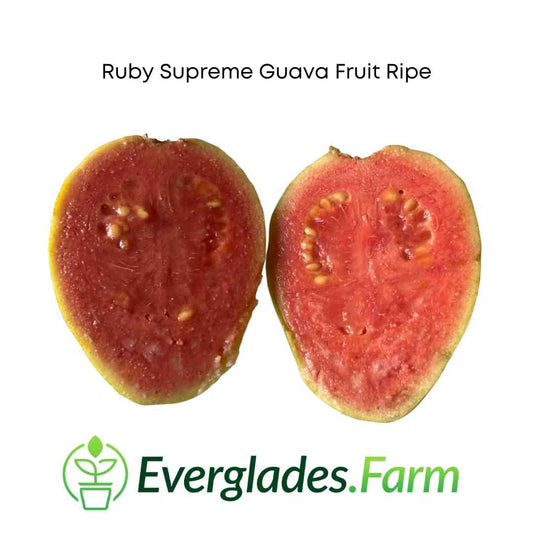Guava Fruit
This bright pink fruit tastes as good as it looks. Originally from the American tropics, this fruit can be grown in any tropical climate, including Florida! Here’s everything you need to know in order to take care of this plant and reap its fruity benefits.
Guava Tree Details
You do not need a lot of space for your guava tree. These trees can be single or multi-trunked and reach 15 feet in height and width. You can prune the tree and grow shorter or in a container. The tree itself is characterized by many unique attributes. The bark of the tree can range from a greenish brown to a light brown, giving the guava tree a unique look.
Guava Fruit Details
The guava fruit is considered a berry. The fruit contains a few brown seeds inside and is coated with a green to yellow peel, depending on ripeness. The flesh of the fruit ranges from white to yellow, pink, and red. The fruit itself is pear shaped, matching the oblong look of the leaves. Depending on when the fruit is cultivated, the peel can range in thickness. Flavor of the guava can also range. Some fruits are super sweet while others can be highly acidic. That’s why it’s important to know what type of guava plant you’re buying. Below a chart describing the most popular guava trees.
|
Name
|
Fruit Pulp Color
|
Fruit Production Months
|
Country of Origin
|
Grown in container
|
|
Ruby Supreme
|
Pink
|
August to October and February to March.
|
American Tropics
|
Yes
|
|
Barbie Pink
|
Pink
|
August to October and February to March.
|
American Tropics
|
Yes
|
|
Ruby Red
|
Red
|
August to October and February to March.
|
American Tropics
|
Yes
|
|
Seedless Guava
|
White
|
August to October and February to March.
|
Thailand
|
Yes
|
|
Thai Guava
|
White
|
August to October and February to March.
|
Thailand
|
Yes
|
|
Asian White
|
White
|
August to October and February to March.
|
Asia
|
Yes
|
|
Kilo
|
White
|
August to October and February to March.
|
Asia
|
Yes
|
How to Plant Guava Trees
When it comes to guava trees, the more sun, the better. When planting, choose a spot with direct sunlight, unobstructed by any permanent items in your yard. Also, remember that these trees can grow either on the ground and are also very suitable to grow in containers, where they can produce a good number of guavas every year. The guava plant does best in sandy soil and should be watered every other day for the first week to promote growth.
















